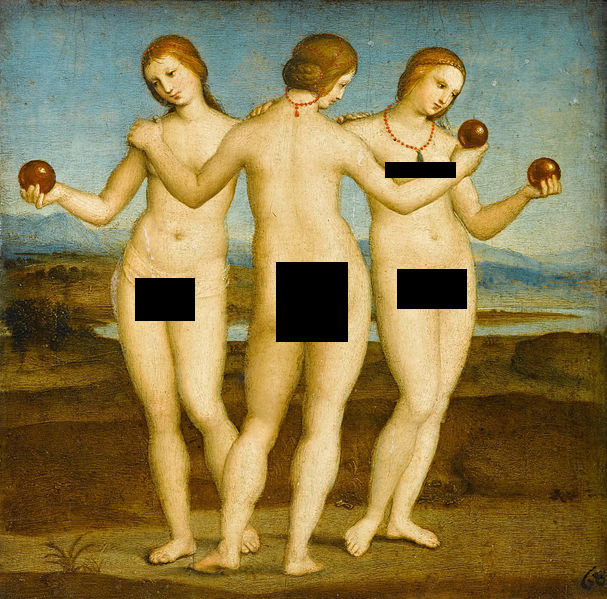| The Three Graces | |
|---|---|
 |
|
| Artist | Raphael |
| Year | 1500-1505 |
| Medium | Oil on panel |
| Location | Musée Condé of Chantilly, France |
| Dimensions | 6.7 in × 6.7 in |
| 17 cm × 17 cm | |
Raphael’s Three Graces shows the three graces of Greek and Roman myth. Aglaea, Euphrosyne, and Thalia dance together in a meadow. In one hand, each holds an apple, possibly the golden apples from the Garden of the Hesperides. Their other hands are on each other’s shoulders in what seems a show of sisterly affection. They are all innocently naked, though the goddess on the left wears a scrap of diaphanous material over her hips, and the woman on the right wears a jeweled necklace. The hair of all three of the Graces is elaborately done, and held in place or embellished with jewels.
An Early Work
The painting, which is an oil on panel, was painted between 1504 and 1505, when Raphael was in his early 20s. It is reputed to be the first study the young painter did of the female nude from both the front and the back. Raphael’s youth is manifest in this painting. Though he depicts the anatomy of the three goddesses with care and realism, the brush strokes are a bit crude and there’s a lack of refinement in the women’s otherwise lovely and gentle-eyed faces. The painting has only hints of Raphael’s mastery to come. This can especially be seen in the middle goddess, whose back faces the viewer and whose face is in a primitively rendered profile.
Beauty and Bleakness
The background reminds the viewer, suspiciously, of the background of the Mona Lisa, which was painted around the same time. Done in the misty, sfumato style that was popular at the time, Raphael’s background is full of gentle but bleak looking hills, a lake, and stunted trees that march, in perfectly mastered perspective, toward misty, chalk gray mountains. The Graces themselves seem to be standing on a patch of barren or cleared land, and in the foreground are a few weak looking weeds. The painting is an almost violent contrast to Botticelli’s Three Graces, who dance in the midst of colorful, burgeoning nature.
The painting is now located in the Musée Condé in Chantilly, France.